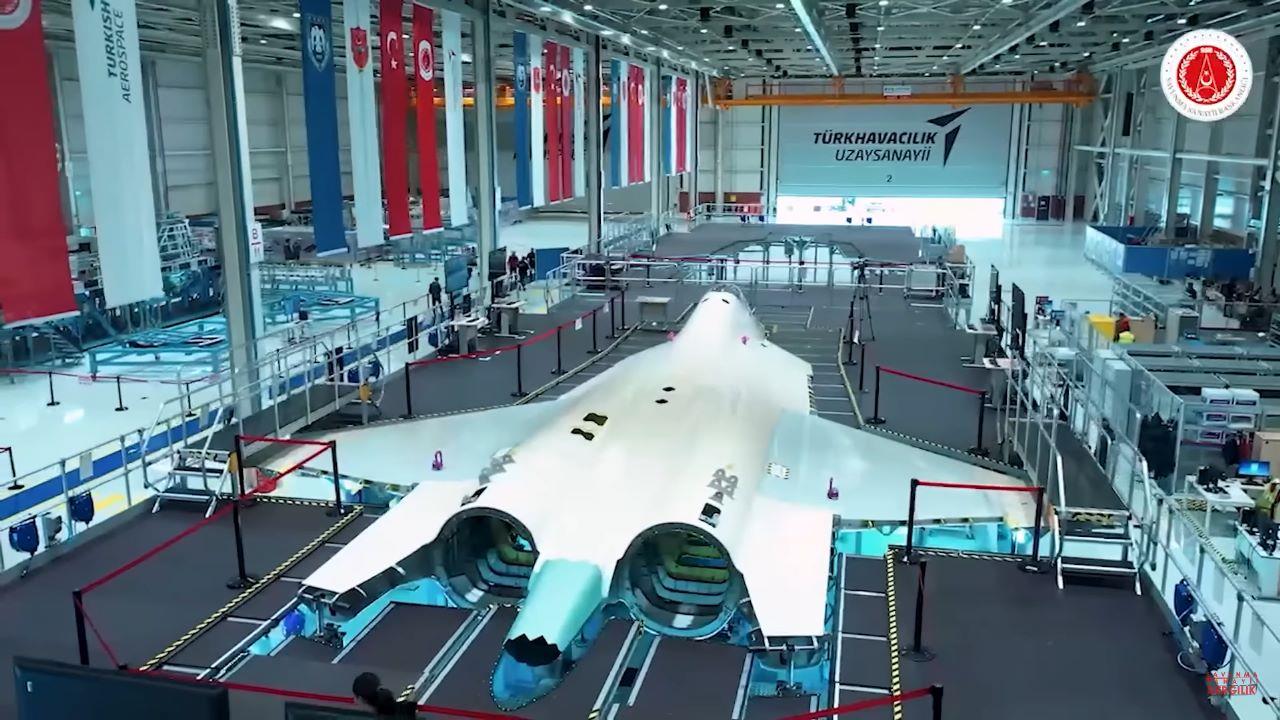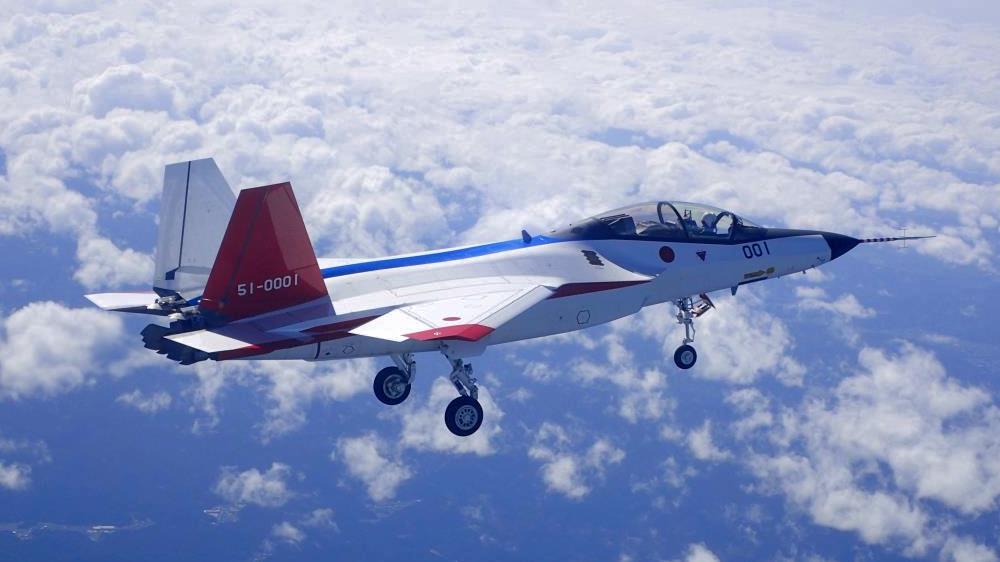(MENAFN- Asia Times) Turkey's indigenous TF-X fighter is finally taking shape, a homegrown plan to put the country in an elite club of middle powers that have successfully built and tested stealth combat aircraft.
Last month, Turkish Aerospace Industries (TAI) released video footage of its tf-x fighter under construction , images that affirmed the country's determination to develop an indigenous fighter aircraft.
The video shows the TF-X in the apparent early stages of construction, with the aircraft's fuselage and wings visible while its engines, control fins and avionics remain out of view.
Although little is known about the TF-X's specifications, thomas newdick notes in the warzone that it will not immediately be in the same league as the US's F-22 and F-35 stealth fighters. He reports that the TF-X's prototype is expected to be unveiled in March 2023, with the first test flight set for 2025 or 2026 and the first units entering service in 2028 or the 2030s.
airforce technology notes that the TF-X is primarily designed for air-to-air operations, with a secondary air-to-ground role. In line with its emphasis on air-to-air missions, TAI mentions the TF-X will have increased air-to-air range using new weapons, most likely the domestically-developed gokdogan beyond-visual-range (bvr) missile .
It will also feature an internal weapons bay to maintain stealth, artificial intelligence and neural network support. With a 14-meter wingspan, 21-meter length and 6-meter height, the TF-X will be smaller than the F-22 but bigger than the F-35.
The TF-X will be powered by two US General Electric F110 afterburning engines or Turkish-made, license-produced F118 non-afterburning engines derived from the F110.

The TF-X under construction in a YouTube screengrab from Savunma Sanayii Dergilik.
However, asia times has reported that the US may be reluctant to sell engines or transfer technology to Turkey given the latter's ambiguous relationship with Russia, seen in its purchase of Russia-made S-400 surface-to-air missiles in 2017 and Turkey's removal from America's F-35 program in 2019.
Newdick notes that the UK's Rolls Royce could be another potential engine supplier but disputes over technology transfer and intellectual property rights would likely hinder any deal. Newdick also notes that while Russia could supply jet engines, the threat of sanctions and Russia's need to replace its own fighter losses in Ukraine make this a dim prospect.
For a middle power like Turkey to develop an indigenous stealth fighter is no small feat.
in a 2021 article for the diplomat , Jacob Parakilas notes that as fighter aircraft have become more expensive, it has become rarer for middle powers to produce their own. He also notes that successfully designing a combat-effective fighter is one thing but doing so in a financially viable way is quite another.
Even leading military powers such as the US, China, and Russia are not immune to cost constraints. For example, cost-death spirals led to the termination of us f-22 production at 187 units in 2009. This is likely the same reason why china has only around 200 j-20 stealth fighters . Likewise, Russia has only between 3 to 15 su-57s , which may be too few to be effective in combat.
Parakilas notes that it is impossible to determine whether 5th-generation fighters developed by middle powers can compete with those from more established manufacturers.
Turkey's TF-X may thus be comparable to Japan's Mitsubishi X-2 and South Korea's KF-21 Boramae fighters, as both middle powers have sufficient resources, knowledge and technology to design such aircraft.
Japan's Mitsubishi X-2 was first developed in 2009 in response to a US decision not to sell the F-22 to its allies. as noted by defence aviation , the single prototype X-2 features 3D thrust vectoring, enabling it to execute tight and fast turns, and active electronically scanned array (AESA) radar.
Compared to the TF-X, the X-2 is relatively tiny, with aerotime hub listing its dimensions at 14.2 meters in length with a 9.1-meter wingspan. The X-2 is powered by two IHI XF5-1 low-bypass after-burning engines. A 2016 test flight saw it hit a speed of 370 kilometers per hour at an altitude of 3,600 meters.

Japan's X-2 fighter jet makes its maiden flight. Photo: Wikipedia
Although the X-2 exists only as a single prototype, lessons learned from its project have been instrumental in advancing japan's f-x 6th generation fighter program , which in partnership with the UK aims to field an air superiority fighter to overmatch China's existing 4th and 5th generation aircraft by 2035.
asia times has previously reported on south korea's kf-21 boramae fighter , an F-35 lookalike 4.5 generation aircraft. The KF-21 lacks an internal weapons bay, making it necessary to carry its weapons on external hardpoints, thus reducing its stealth compared to other 5th-generation fighters equipped. korea aerospace industries (kai) lists the kf-21 as having an 11.2-meter wingspan, 16.2-meter length, and 4.7-meter height.
It is powered by two US General Electric F414 after-burning engines used in the F/A-18 Super Hornet and JAS 39 Gripen, giving it a maximum speed of 2,250 kilometers per hour. The KF-21 is also designed to carry a wide variety of Western and South Korean armaments, such as its indigenous BVR missile, still under development, and the Swedish-German Taurus KEPD-350 cruise missile.
South Korea envisions the KF-21 as a high-end alternative to the F-35, costing half as much as the US-made latter. The country also expects to pitch its KF-21 on global markets as a more affordable option compared to Western 4.5 generation fighters such as the Eurofighter and Rafale, offering 4.5 generation capabilities for a fraction of the price.
Turkey's TF-X may aim to follow the example set by Japan, with the fighter serving as a testbed for an even more advanced combat aircraft in the future. On the other hand, it could also follow the example of South Korea in seeking to enter the export market for affordable 4.5-generation fighters.

The US has withheld the F-35 from Turkey due to its relations with Russia. Image: US Air Force
In any case, the TF-X should be a significant stimulus for the Turkish aerospace industry. in a trt world article last month , Ibrahim Karatas notes that TF-X production can build from where Turkey's involvement in the F-35 program left off in 2019 after being removed by the US.
according to the us naval institute , eight Turkish firms were involved in F-35 airframe and engine design, with Turkey selected to be the first European F-35 engine maintenance hub. The source also notes that Turkish-made F-35 parts were set to be fielded globally, with the companies slated to do US$12 billion worth of labor on the F-35 over its lifetime.
Given those losses, Karatas notes that the TF-X will provide a lifeline to the Turkish defense industry as a significant revenue generator, an affordable combat aircraft for the Turkish military and a contributor to the country's strategic independence.